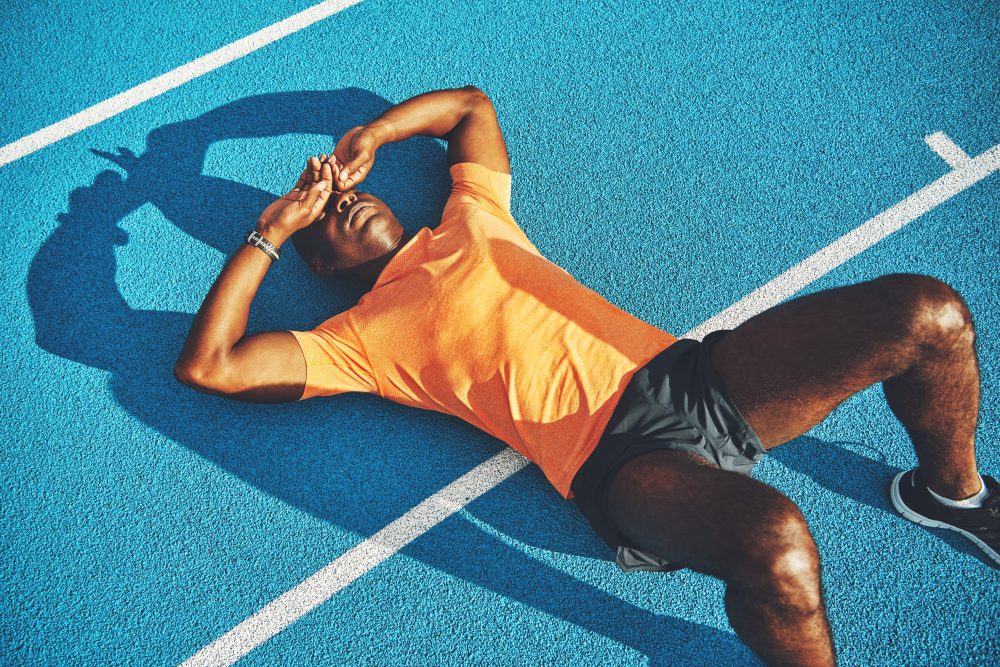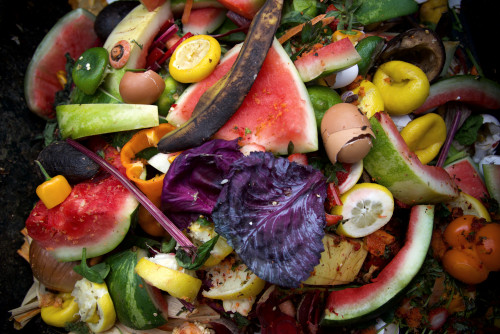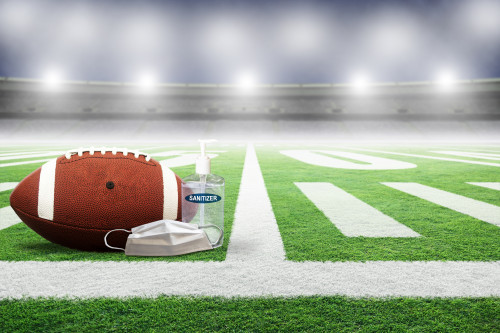Factories manufacture new essentials, a socially distanced arts festival, and shuttered restaurants become grocery providers.
Going for the Gold (Standard) in Mental Health
We live in a society that values performance and productivity – but we’ve hit a breaking point. Increasing political, financial, and environmental stress along with the unease of the ongoing pandemic has severely strained people’s mental health. In response, we’ve seen a switch from a work-hard, play-hard mentality in favor of Restivism – a growing movement of people prioritizing rest ethic over work ethic, from personal life to work life. In February, 61% of US respondents told us they quit a job without backup to escape an unhealthy environment – a 32% increase from May of 2021.*
High-profile athletes are increasingly bringing this shift to the main stage of sports and pop culture, making headlines along the way. While audiences expect their favorite athletes to consistently bring their A-game, sports icons and brand sponsors are challenging this “always-on” mentality by asserting boundaries, prioritizing their wellbeing, and evolving the narrative of what success looks like. From former women’s tennis number one Naomi Osaka declining stress-inducing press interviews to Olympic gold medal gymnast Simone Biles withdrawing from Olympic events over safety concerns, top athletes are taking public stands over trophies on the prioritization of mental health.
(It’s Okay to) Drop the Ball
Montreal Canadiens goalie Carey Price made news last October when he stepped away from hockey to prioritize his mental health. Price’s wife took to Instagram to express her support for her husband’s efforts, “not just by saying it, but by showing up and doing the work to get better.” Sometimes a pause is necessary to boost performance, and brands are amplifying this message. Powerade’s recent “Pause is Power” campaign includes a commercial aimed at de-stigmatizing breaks, featuring Olympians Simone Biles and Tom Daley – the British diver who, during the 2020 Summer games, won over more fans for his charming knitting hobby than his medal wins. The campaign also includes a “Press Pause Contest,” which gives twenty student-athletes across the nation the chance to win a fully-funded summer off, demonstrating the actionable role brands can take to support this shifting mindset.
Beyond sports, brands and role models are bringing powerful pauses to the worlds of work and academia. Last month, LinkedIn added a new option for resumés to highlight rather than hide users’ gaps between jobs. Profiles can now include intervals like career transitions, travel time, and personal pursuits to normalize healthy career breaks. And it’s a trend people are taking action on. Yale University’s Laurie Santos, known as “the happiness professor,” recently spoke with the New York Times about her decision to take a leave from teaching next year. Santos highlights the importance of burnout recognition and treatment, urging others to treat it as one would a physical issue. As more people feel supported in their choice to “drop the ball,” it’s becoming increasingly normalized as something not just spoken about but acted upon, creating a ripple effect across broader society.
Together as a Team
Enacting big, cultural changes takes teamwork, but the ball is rolling. As the mental health conversation heats up, brands and influencers have the power to call greater attention to the topic and help transform mental health care. During the 2022 Winter Olympics, Team USA provided athletes with useful resources like sports psychologists, group therapy sessions, and free access to wellness apps like Headspace Plus and WellTrack. The effort acknowledged the high-pressure setting of the games and the mind-body balance required for success, and brands are joining in. Last month, New Balance and District Vision launched a collection of apparel and sneakers paired with a series of micro-courses that tackle mindfulness in fitness. Among the courses, Olympic runners Emily Sisson and Brenda Martinez lead “Runner’s Heart,” where they divulge tips, tricks, and habits for mental wellness in athletics.
Influential celebrities and leaders are creating resources that elevate mental health in culture more broadly. Wondermind, an upcoming media ecosystem of mental health resources helmed by actress, singer, and entrepreneur Selena Gomez with Newsette CEO Daniella Pierson, will include a range of expert-reviewed content across newsletters, interviews, and a podcast. As the fourth most followed Instagram account in the world, Gomez’s influence is vast, and the star aims to use the new platform to destigmatize perceptions of mental health and wellness while revolutionizing the way we practice it. But with recent steps by the White House to address the pandemic-induced stress burdening essential healthcare workers, reform is having an even wider reach. In March, President Biden allocated $135 million in funds to train medical students, residents, nurses, and other professionals in evidence-based mental and substance use disorders strategies, with grants going to medical schools, academic health centers, government agencies, and nonprofits. With mental wellness reform at the forefront of society, the power of team effort is propelling us into action.
What This Means
The number of Restivism-focused initiatives over the past year alone reveals a powerful public desire for reformed mental health practices and habits. In December 2021, 96% of US adults told us that “emotional health is just as important as physical health.”** People and brands are illustrating a cultural shift that acknowledges our need to slow down. As 2022 continues, we expect a rising tide of reform policies and new procedures to bring more than just awareness of and accessibility to mental health as a right, but as the gold standard both on- and off-the-field.
Brand Implications
As people, brands, and policies bring mental health into the forefront of cultural conversations, it’s time for more to make a move. By identifying pain points of your trade, alleviating “performance anxiety,” and making mental wellness a driver for experience, brands can hit the mark. For example:
- Airlines: The travel industry runs on hustle and bustle, and airports can be pure time-crunched chaos. From passengers to the crew, all fliers feel pressure from the high-energy and often stress-inducing process of air travel, particularly at boarding time. An airline can adopt a campaign centered around keeping calm at the gate. Following flight check-in, help passengers lift off some steam by transforming the waiting area into a sensory suite that uses color, scent, sound, and touch to create a relaxing escape pre-boarding.
- News/Journalism: Balance between doom-scrolling and essential news reading can be tricky. Staying up to date on current events today is overwhelming, but for many, being informed is crucial. To ease information overload, a newspaper (print or digital) can incorporate periodical reminders to take a pause from reading or offer engaging pop-up activities to encourage #breaksbeforebreakdowns.
Sources: *Horizon Media, Finger on the Pulse. Survey fielded 1/30/22-2/13/22, n=1,129; **Horizon Media, Finger on the Pulse. Survey fielded 11/29/21-12/9/21, n=1,140




